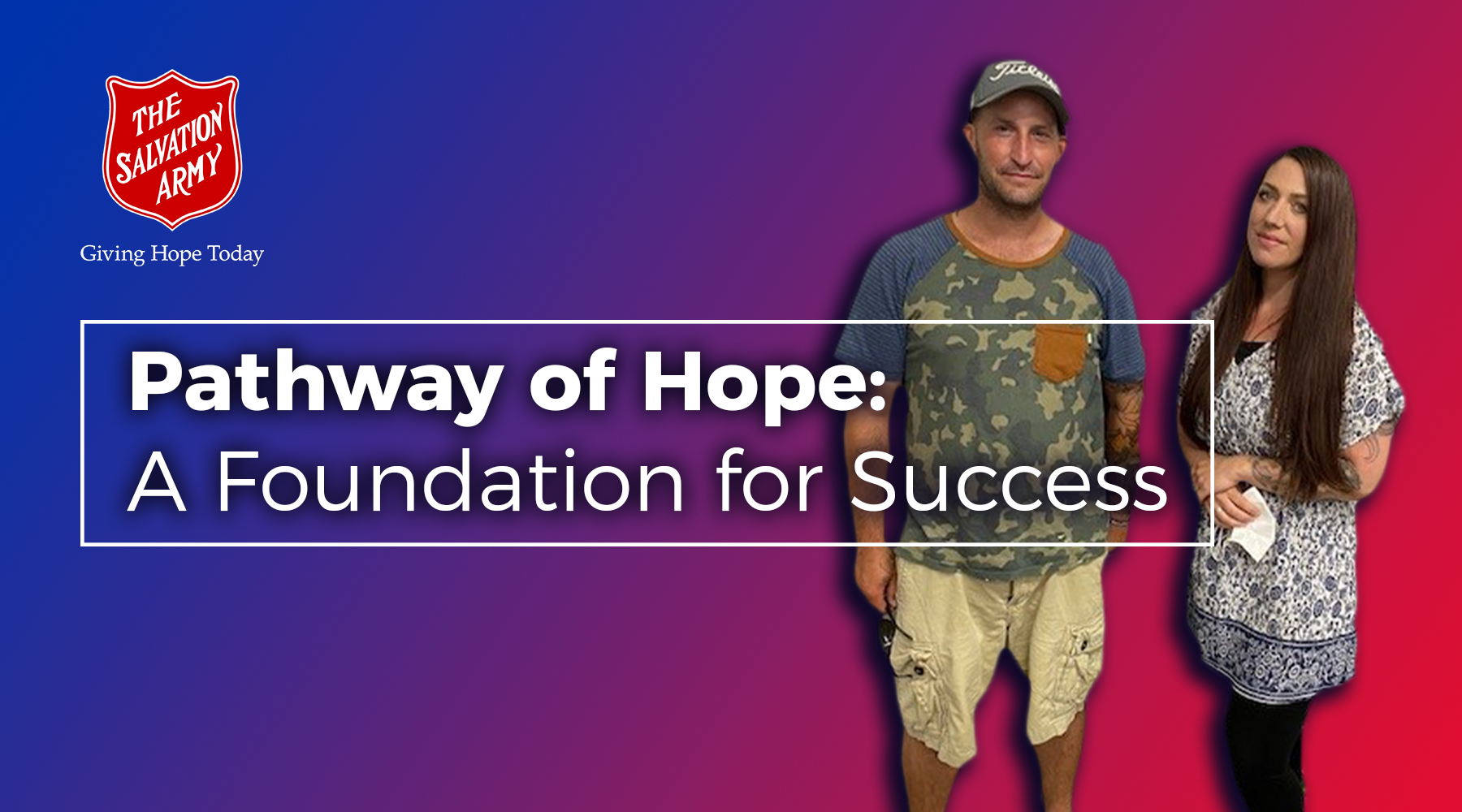Pathway of Hope’s vision helps people and families through life’s challenges, steering participants in a positive direction that can bring transformative change to entire communities.
The free, personalized, intensive case management program operates in 25 Salvation Army Ministry Units across Ontario, giving participants and their families the skills and knowledge needed to escape the cycle of poverty.
Through personal development, one-on-one care, and spiritual growth utilizing Salvation Army programs and services, participants are given the tools to craft a plan designed to move them forward with confidence. Pathway of Hope participants determine the ambitions that matter most to them, creating positive life-changing goals around housing, employment, education, health, and financial stability.
In 2021 across Canada, 620 Pathway of Hope participants set more than 1,250 individual goals. Of those, just over 600 were met successfully. Since its pilot launch in 2016, 1,200 people have taken part in the program across Canada, and from 2020 to 2021, during the COVID-19 pandemic, the number of Pathway of Hope participants increased by 203 percent.
Last year, Pathway of Hope presented 33 training education and training sessions in Canada that were attended by 913 people. Since Pathway of Hope’s establishment in 2016, more than 6,000 service connections have been made across the country, while another nearly 2,400 participants were referred to Salvation Army service partners for additional support with housing, employment, education, or mental health concerns.
“Caseworkers provide participants with wraparound supports focused on their personal goals and aspirations, taking measurable steps to show progress and success in overcoming personal barriers,” says William Osei, Corps Ministries Divisional Pathway of Hope Coordinator in Ontario.
Participants are guided by caseworkers through four stages along the Pathway of Hope journey: crisis, vulnerability, increasing stability and sufficiency, while integrating spiritual care into the plan as a tool in building up a participant’s confidence. On average in 2021, participants spent 11 months in Pathway of Hope, up from eight months in 2020, an increase caused in part by the pandemic.
Sharon Stoops is The Salvation Army’s Territorial Pathway of Hope Coordinator, working to expand the initiative into new locations, while seeking to boost participation and implementation with active Pathway of Hope providers.
“The idea behind this model is to work differently with people, so we are not just being transactional, but instead we are being transformational in addressing root causes of an issue with people one on one,” Sharon explains.
These root causes are integrated through Pathway of Hope using a range of services that The Salvation Army provides, including housing and homelessness support, emergency food bank assistance, mental health and addiction programs, spiritual and emotional support, and referrals to Salvation Army service partners.
“Pathway of Hope tracks measurable actions steps and provides measurements of progress so we can celebrate success along the way,” William says. “Most importantly, the participant is intentionally connected and integrated into a community to receive on-going support as they journey toward an independent life.”






Leave a Comment